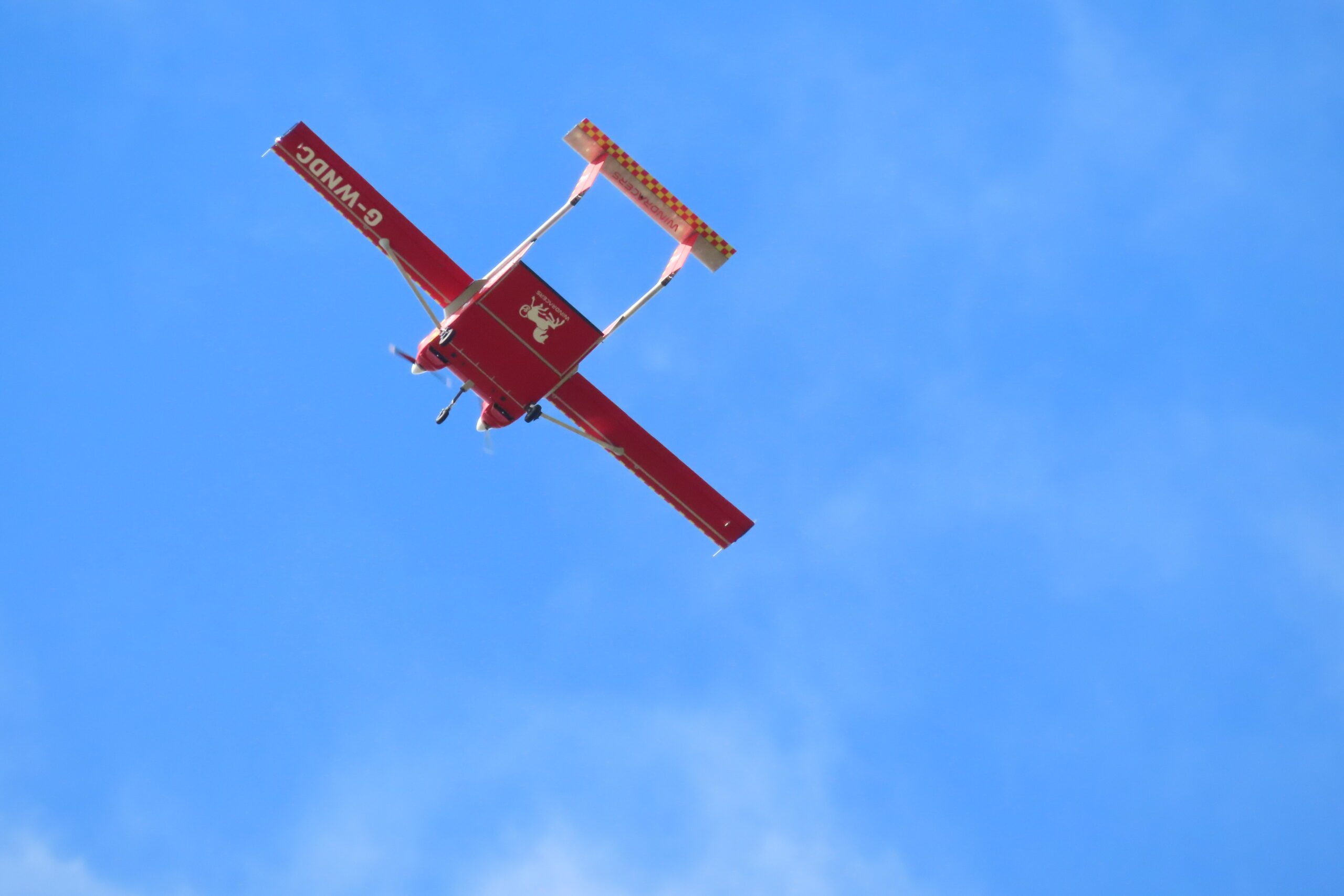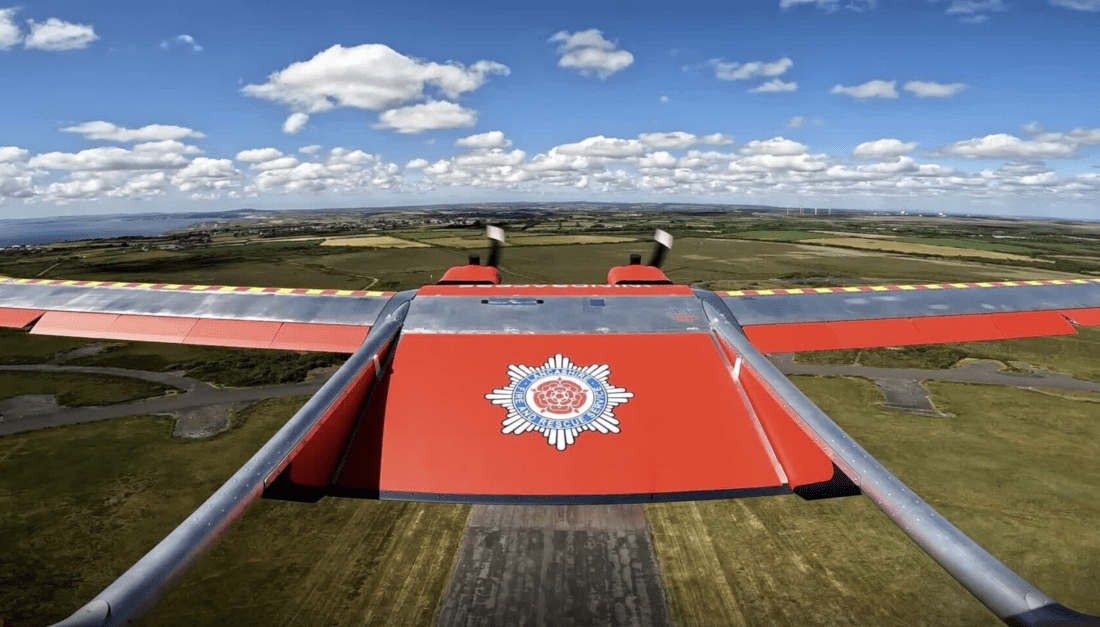Windracers’ AI-Powered Ultra UAVs Show Promise in Early Detection and Rapid Response to Wildfires
by DRONELIFE Staff Writer Ian J. McNabb
Windracers, a UK-based autonomous cargo drone developer, recently announced that their flagship Ultra UAV had been tested by the Lancashire Fire and Rescue service for wildfire prevention, as part of an effort to test new low-cost early mitigation strategies.


“The earlier we reach fires, the less harm they pose to firefighters, communities, infrastructure and the environment,” said Lancashire Fire and Rescue Service’s Chief Fire Officer, Justin Johnston.
According to the press release, “Wildfires have become more frequent, large, and severe in the United Kingdom. Factors such as land use changes, higher temperatures, drought conditions, and climate change contribute to this trend. In 2022, there were over 44,000 wildfires – a rise of 72% from the previous year.” Just last year, the Lancashire Fire and Rescue service spent over 41 days battling a wildfire that spanned over 18 square kilometers (almost 7 square miles) In comes the Ultra drone, which can carry over 100 kg or 220 lbs of fire-retardant chemicals and respond automatically to new wildfire threats as they arise.
Using AI technology from University of Sheffield, incorporating thermal and optical imaging, the drones can automatically detect and investigate fires and then send important data to fire teams on the ground. Under the supervision of fire and rescue teams and using swarm technology developed by University of Bristol, the drones can then intelligently self-coordinate as first responders to rapidly deploy fire suppressant chemicals onto the fire, monitor the situation and return to base.
“This successful trial was the culmination of four years of research and development which brought together some of the country’s greatest minds in autonomous aviation, AI and robotics to help tackle one of society’s greatest challenges,” comments Stephen Wright, Founder and Executive Chairman at Windracers. “We believe this highly cost-effective technology could be a game-changer.”
The flight trial, which was based at Preddanack airport in Cornwall and spanned the course of a week, rigorously tested the autonomous fire detection and swarm capabilities using one ULTRA and 3 smaller UAVs. According to the press release, “ULTRA and the drones successfully identified and approached a number of small, controlled fires – which were monitored closely by fire and rescue services. It is a key milestone in the development of wildfire prevention technology which could be deployed by firefighters in the coming years pending regulatory approval.”
“The self-governing swarm of flying drones could help firefighters detect a wildfire earlier, while being able to locate the exact place of fire and summon other drones to control the fire before firefighters get to the scene. We are proud and delighted to be part of this trial, the first of its kind in the world, and have a say in technology that could greatly reduce the risk of wildfires,” adds Justin Johnston, Lancashire Fire and Rescue Service’s Chief Fire Officer.
The project received funding from The Future Flight challenge at UK Research and Innovation, delivered by Innovate UK. “Protecting environments with unmanned aerial vehicle swarms” was one of the 17 projects that split £73 million in funding to aid in developing integrated aviation systems and new vehicle technologies.
“Finding and tackling wildfires before they become a problem requires many robots to work together as a swarm,” said Sabine Hauert, Professor of Swarm Engineering at University of Bristol. “We’ve spoken to firefighters around the world to design a swarm that is useful and easy for them to operate. It was great to see this technology being tested for the first time.”
More information on Windracers is available here.
Read more:
Miriam McNabb is the Editor-in-Chief of DRONELIFE and CEO of JobForDrones, a professional drone services marketplace, and a fascinated observer of the emerging drone industry and the regulatory environment for drones. Miriam has penned over 3,000 articles focused on the commercial drone space and is an international speaker and recognized figure in the industry. Miriam has a degree from the University of Chicago and over 20 years of experience in high tech sales and marketing for new technologies.
For drone industry consulting or writing, Email Miriam.
TWITTER:@spaldingbarker
Subscribe to DroneLife here.


